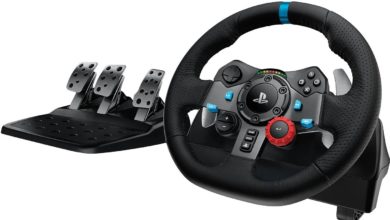It is time to move from qwerty layout
****physical/hard key keypad lovers, please go through this before you continue 1878. This is the year when the qwerty keyboard became famous. To this day, majority of the world does not know what the reason is for the specific arrangement of characters. Many think that this way, words are typed faster. Partially, yes! In this article, we explain why the layout of qwerty is created and we suggest two layouts that make it much easier for you to type on (well, on practice) than on qwerty layout. The image below was the first type writer with qwerty key arrangement. ****Getting used to a new layout can be a painful and time taking process as one has to move from something that he/she is used to over many years but in the end, it is worth the pain**** ****Android users: if you want to know how to use dvorak or colemak, jump here**** **** Do not go cold turkey with alternate layouts. Start with an hour or two a day for a week or two and then go cold turkey**** In short, qwerty is designed for the thing that is shown below, not for your ultra modern smartphone or laptop: first qwerty device <<hit read more to continue>> The problem at hand During the 1870s, Christopher Latham Sholes, a newspaper editor and printer from Milwaukee worked a keyboard for a type writer to be manufactured by Remington. The painful problem that he and Carlos Glidden faced while designing the layout is that when two adjacent keys are pressed on a type writer in quick succession, it resulted in what is commonly known as ‘clash-jam’ where two type bars (metal arms that hit the paper) clash and jam. Qwerty layout is designed with this problem in mind. By addressing the clash-jam problem, qwerty gave typewriters better typing speed and accuracy. Ergonomics and stress free was not exactly a worry at that time. The final qwerty layout (what we see today) was finalized after Sholes and Glidden worked with engineers after selling the rights to manufacture the typewriter to E. Remington and Sons. When the PC revolution started, qwerty was made the standard keyboard layout due to the simple fact that the world is used to qwerty layout and that it will keep the typists away from learning typing all over again. As time passed, we saw many changes to PC keyboards but one thing that has not changed is the layout. This is what Colemak wiki says about qwerty and yeah, we do agree on some of these points (Source):
It places very rare letters in the best positions, so your fingers have to move a lot more.
It suffers from a high same finger ratio that slows down typing and increases strain.
It allows for very long sequences of letters with the same hand (e.g. “sweaterdresses”)
It was designed to prevent the keys from sticking, without any consideration to ergonomic or efficiency aspects.
It was designed so the word “typewriter” could be typed on the top row to ease demonstrations.
It suffers from an extremely high ratio of home-row-jumping sequences (e.g. “minimum”)
In short, qwerty is one of the worst layouts when it comes to ergonomics and given that the keys are actually etched onto the keyboards, there is not much that one can do (well, one can rearrange keys in certain keyboards and configure the OS to use custom or other existing layouts among few DIY mods). The story is a bit different for smartphones and tablets (especially ones powered by Android). Thanks to the heavy customization that Android allows, trying alternate layouts can done in matter of minutes and without breaking sweat. Adding non-qwerty layout to the onscreen keypad is extremely easy and we cover that towards the end of this article. Dvorak and Colemak Dr. August Dvorak patented a new keyboard layout in the year 1936 and the new layout was named Dvorak. According to Dvorak, qwerty users use more of top row than home row, left hand is used more than the right hand and that most common words are typed with one hand resulting in very un-ergonomic usage of keyboard. Reports say that using layouts like dvorak and colemak reduces stress and strain related injuries like RSI and Carpal Tunnel Syndrome. The new layout that Dr. Dvorak designed has:
Vowels are on left side of home row and consonants are on the right side of keyboard, most used symbols are kept on the left side. This gives better balance to both hands as keystrokes alternate between hands and reduces fatigue for one hand.
70% of keystrokes are done on home row which reduces movement of fingers causing less strain. 22% of strokes are done on top row and only 8% of keystrokes are on bottom row
There is one problem with Dvorak layout. We are so much accustomed to qwerty that moving to an entirely different layout is a tiring process (initially). Stats say that one can get completely accustomed to Dvorak in matter of weeks (while it takes months for qwerty) but if you want to take it easy, you can try Colemak layout. Colemak is more modern and is designed with qwerty users in mind. Colemak helps you type 2.2x faster than on qwerty, provides an ergonomic layout and let you use existing OS shortcuts with ease. When compared with qwerty, only 17 keys are changed in colemak which makes it easier to learn. In the modern world, Colemak is gaining slightly more momentum than drovak due to strong support in linux and unix community. The downside though is that there is absolutely no keyboard for PC that comes with Colemak layout.
Activate Dvorak on Android
dvorak If you are using Jellybean variant of Android, dvorak layout comes pre installed (but disabled). To use colemak though, you need to install a 3rd party keypad but if you using Swiftkey keypad, you can easily activate colemak layout.
Go to system settings and click on ‘language and input’
click on ‘Android keyboard’ settings and then click on ‘Input Languages’
Select ‘English (US) (Dvorak)’ and go back.
Click on ‘Default’ and select ‘English (US) (Dvorak)’. While you are using the keyboard, you can long press ‘language options’ icon (that looks like a globe, to the left of space bar) and choose among available layouts.
Activate Colemak layout on Android Colemak_layout_2 Android does not provide colemak as a built-in layout which means that you have to rely on third party keyboard tools. If you have not installed Swiftkey on your Android device, you better get one. Swiftkey keyboard is one of the must have applications on Android and has support for huge number of languages along with dvorak and colemak layout support. If you are looking for free keyboard apps, you can try ‘AnySoft keyboard’ or ‘SlideIt Free’ and then activate Colemak from respective settings page. Note: We will cover PC and Mac in a different article as that requires lot more coverage and detail than this post and can make the article look lengthy and yaaaawny! Moreover , we felt that adapting to these new layouts on a smartphone is a bit easier than that on a PC or laptop which needs proper typing tutors and practice. References:
http://colemak.com/wiki/index.php?title=Main_Page
http://en.wikipedia.org/wiki/Dvorak_Simplified_Keyboard
http://en.wikipedia.org/wiki/Keyboard_layout



